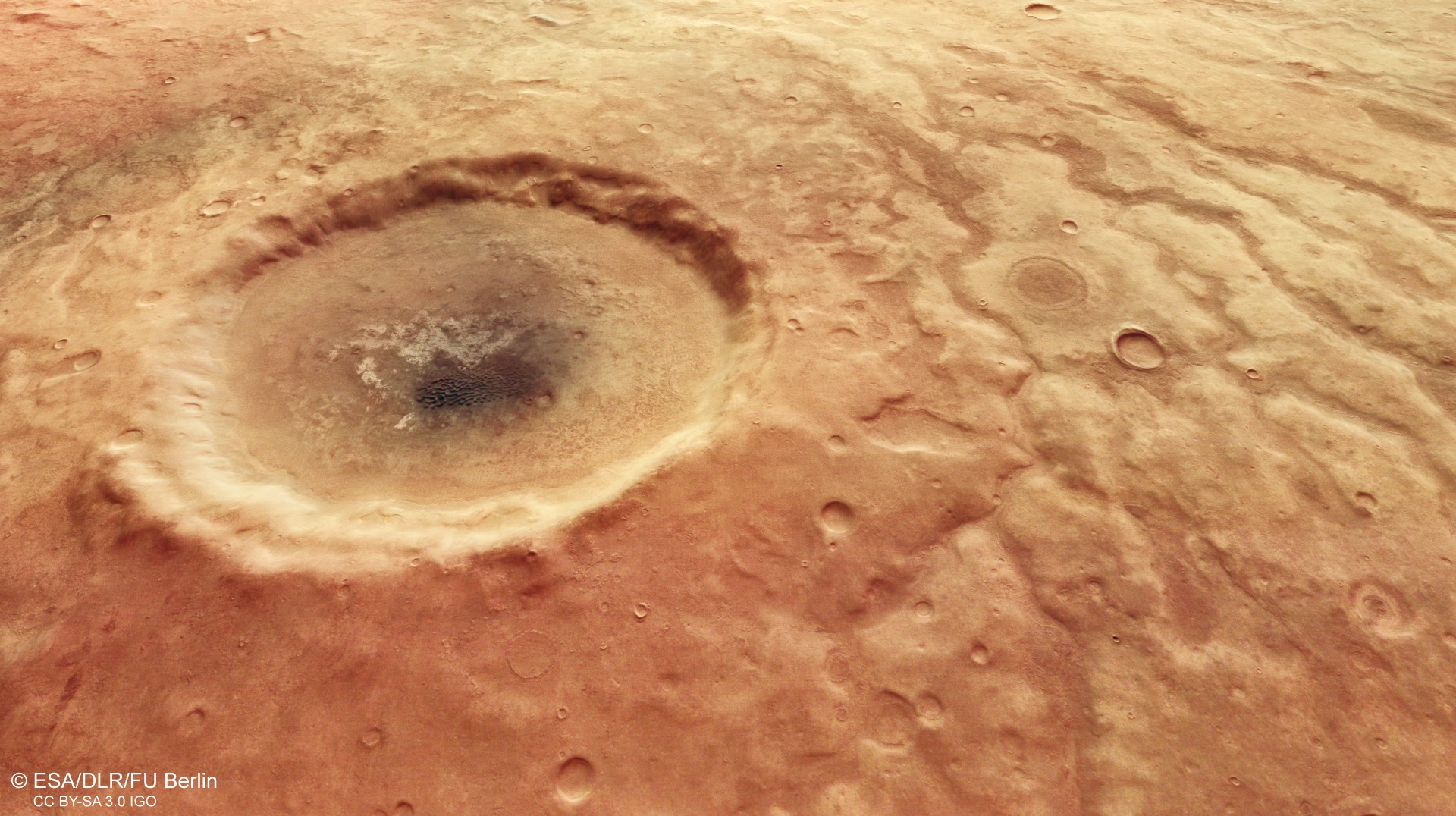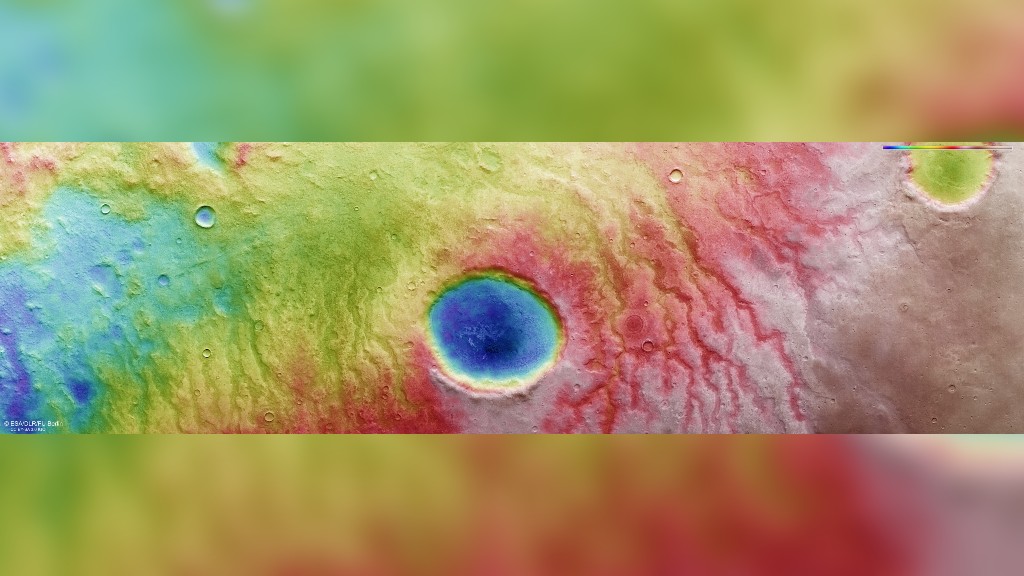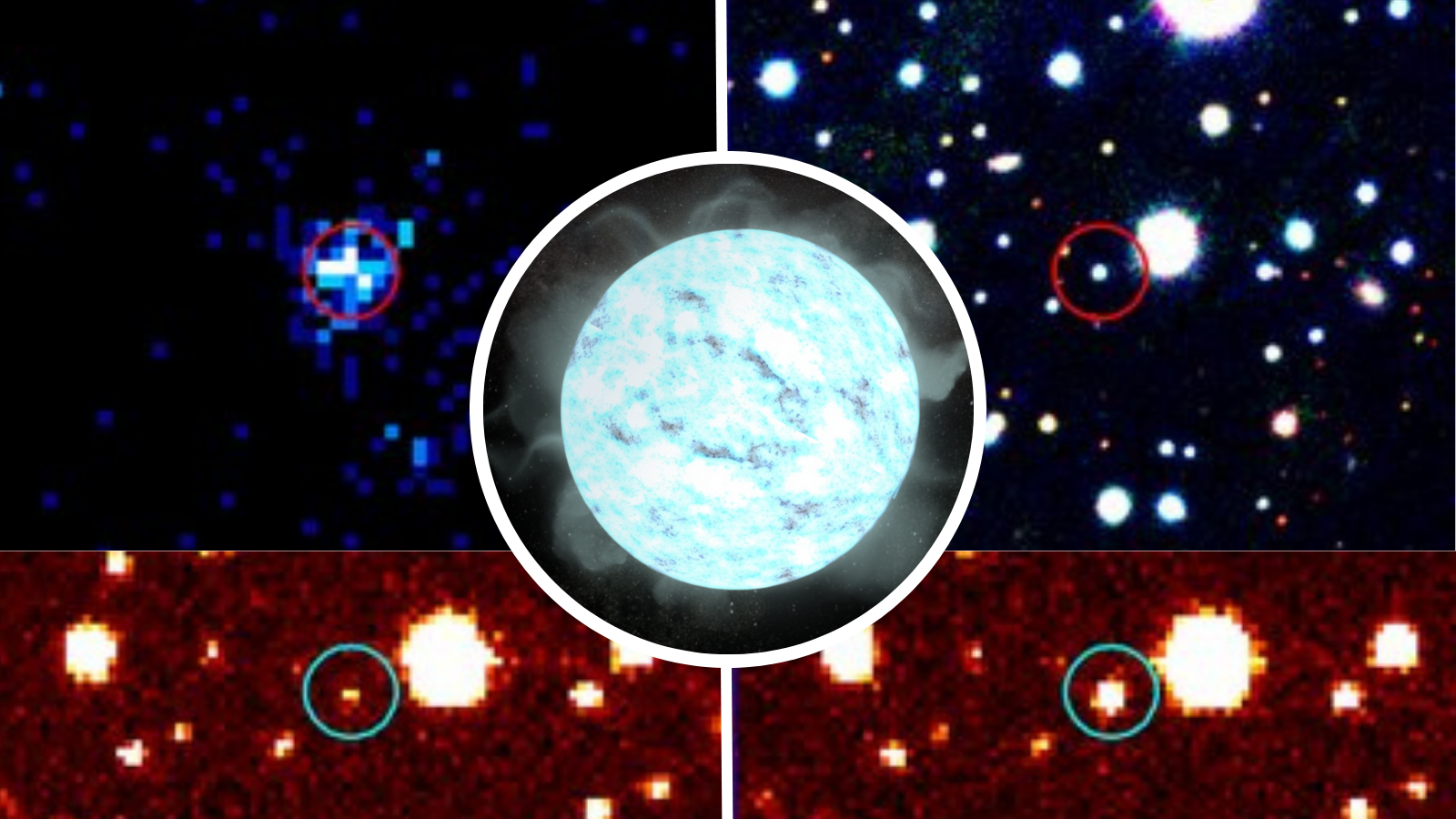Mars stares back with eerie eyeball-like crater (photo)
A giant, unnamed crater stares back up at Europe's Mars Express orbiter.

It's almost like a Mars impact crater is staring back up at the European Mars Express orbiter in this recently released image.
The European Space Agency (ESA) spacecraft imaged the 18.6-mile-wide (30 kilometers) unnamed crater on Mars on April 25. ESA released the image in a blog post on June 8.
The interior of the crater hosts a dark dune field within a lighter surrounding surface. The colors and contours within the crater captured by the Mars Express High Resolution Stereo Camera (HRSC) reveal many different materials and a textured history.
Related: 12 amazing photos from the Perseverance rover's 1st year on Mars
"Conjuring images of veins running through a human eyeball, these channels are likely to have carried liquid water across the surface of Mars around 3.5–4 billion years ago," the post stated.
The crater is located in Aonia Terra, an upland region in the southern highlands of Mars. The image itself is a "true color" image, reflecting what would be seen by the human eye if looking at this region of Mars, with a ground resolution of approximately 46 feet (14 meters) per pixel.

The ESA blog post also included a color-coded topographic image, with lower-lying parts of the surface shown in blues and purples while higher altitude regions show up in whites and reds. Cone-shaped hills and other inconsistencies on the surface of the inner crater are signs that the space inside the "eye" has previously been filled with a diverse range of materials.
Get the Space.com Newsletter
Breaking space news, the latest updates on rocket launches, skywatching events and more!
Mars Express has been orbiting the Red Planet since December 2003, imaging and mapping Mars' surface and probing the planet's tenuous atmosphere. The spacecraft has also uncovered evidence of water during its science operations.
Follow us on Twitter @Spacedotcom and on Facebook.
Join our Space Forums to keep talking space on the latest missions, night sky and more! And if you have a news tip, correction or comment, let us know at: community@space.com.

Andrew is a freelance space journalist with a focus on reporting on China's rapidly growing space sector. He began writing for Space.com in 2019 and writes for SpaceNews, IEEE Spectrum, National Geographic, Sky & Telescope, New Scientist and others. Andrew first caught the space bug when, as a youngster, he saw Voyager images of other worlds in our solar system for the first time. Away from space, Andrew enjoys trail running in the forests of Finland. You can follow him on Twitter @AJ_FI.
